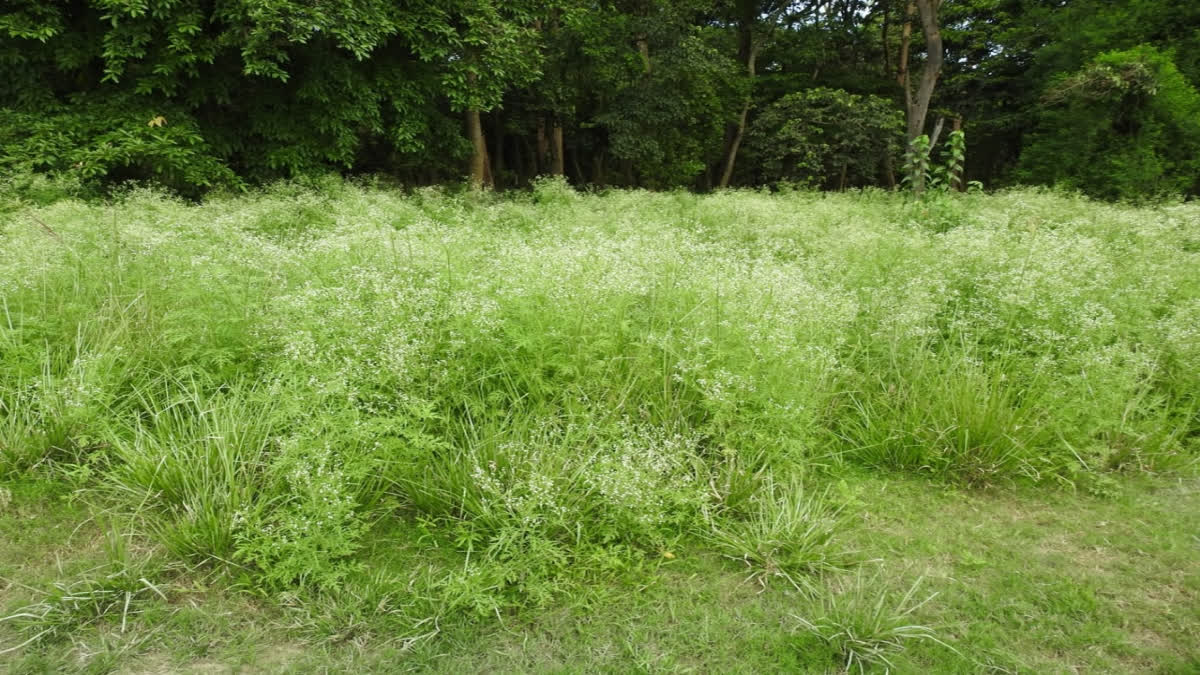Guwahati (Assam): After fighting a battle against poaching for decades, the one-horned rhinos in Assam are now fighting against another odd — the invasive alien plant species.
Yes, while the poaching of one-horned rhinos are on the decline in Assam, the gentle giants are now fighting another battle for their survival against the invasive alien species, which have emerged to be a major concern in most of the rhino habitats in Assam in recent times.
According to statistics available with the Assam government, rhino poaching has been on a declining note since the last few years. The year 2013 and 2014 recorded the highest poaching of rhinos with reports of 27 rhinos poached each year, the year 2022 recorded zero rhino poaching in Assam after a gap of 45 years. In 2020 and 2021, two rhinos each were killed.
"Invasive plants destroy the food sources that rhinos need to graze and browse on. The growth of invasive plants are a major concern in most of the rhino habitats in Assam," said Dr. Bibhab Talukdar, a conservationist and the chair of the International Union for Conservation of Nature’s (IUCN) Asian Rhino Specialist Group.
All the major rhino habitats in Assam including the Kaziranga National Park, the Manas National Park, Orang National Park and Pabitora Wildlife Sanctuary have seen the growth of alien invasive plants like the Mimosa, Chromolaena odorata, Mikania micrantha and Parthenium in varied degrees, he said.
The invasive plants choke out grasslands also leading the rhinos to stray into nearby farmlands to forage on crops leading to conflict with humans.
Giving the details about the growth of invasive plants, Senior Scientist of Aaranyak Dr. Bibhuti Prasad Lahkar said that 30 per cent of grasslands is invaded by invasive plants in Kaziranga National Park, affecting the rhino habitat.
“In Pabitora Wildlife Sanctuary, 40 per cent of the grasslands have been invaded by the invasive plants. The alien invasive plants are a major concern across the wildlife habitat in present times,” said Lahkar, an internationally acclaimed Conservationist and Ecologist and recipient of the IUCN World Heritage Hero Award in 2016.
"Earlier poaching used to be a major concern for the one-horned rhinos in Assam. However, poaching has declined in recent years due to the multi-pronged strategy adopted by the Assam government. However, these invasive alien plants are causing major concern for all the rhino habitats now, which needs regular monitoring and effective forest management strategies to secure the rhino habitats," he said.
Listed as vulnerable by the International Union for Conservation of Nature (IUCN) on its red list, the population of the greater one-horned rhinoceros is estimated to be around 4,000 in the wild. Out of these 4000 rhino populations in the wild, 90 per cent are found in different protected areas in Assam—Kaziranga National Park (2613), Orang National Park (125), Pabitora Wildlife Sanctuary (107) and Manas National Park (40) as per the 2022 rhino census.



